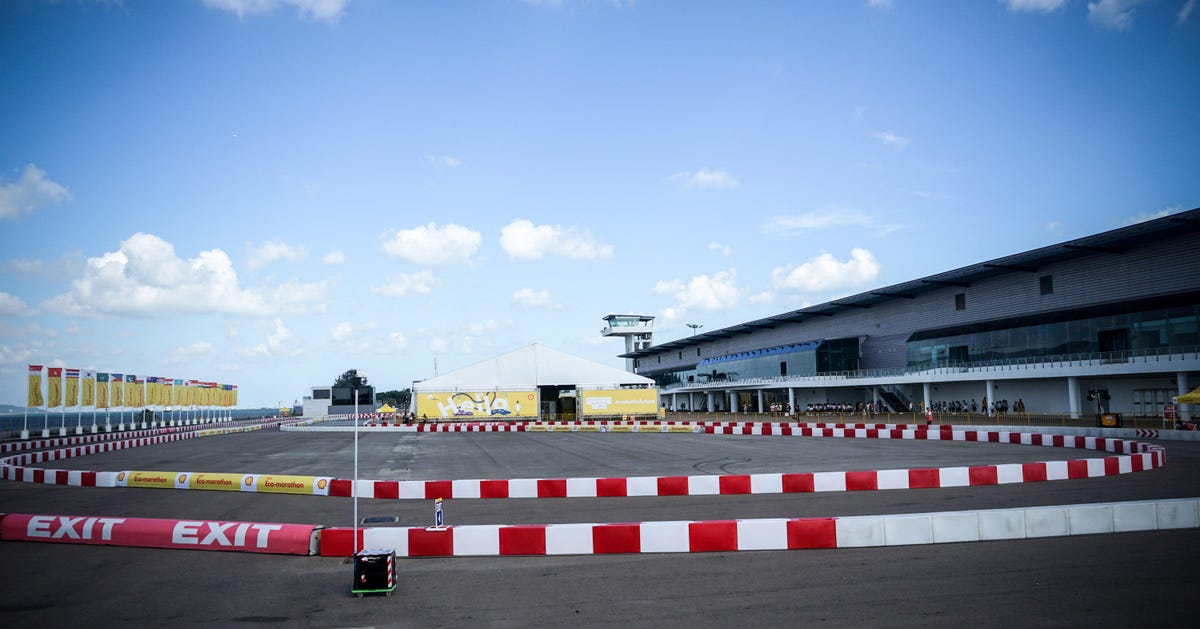Shell's Eco-marathon serves up super cool futuristic cars
The car race features student teams from 18 countries competing in a race to see whose car is more fuel efficient.

The Shell Eco-marathon took place at the Changi Exhibition Center in Singapore, and the weather was sunny and terribly hot.
The cars go round the track really slowly, using a method called "coast and burn" to save on fuel.
Overtaking on the track can be done either on the left or the right, but you'll have to blast your horn to do so.
It's quite the tight fit for most, so some teams use female drivers (though we can't confirm if the person driving in this one is female).
If you're wondering just how small the cars are, here's another look.
The Eco-marathon is all about fuel efficiency, so it's no surprise that the race is mostly quiet until the engine turns on for a brief burst of speed.
This Shell Prototype is a reference car that requires the driver to be lying down.
You'll have to lie down to fit.
You'll have to squeeze your legs all the way in, so if you're of a bigger size, this will be difficult.
The engine's from a motorcycle, and each vehicle is loaded with a tiny amount of fuel -- around 20ml.
When fully closed, the Prototype aims to be as aerodynamic as possible.
The UrbanConcept wouldn't feel out of place next to a normal car, but it will be a lot smaller.
The inside of the Shell UrbanConcept reference resembles a normal car.
The Nanyang Technological University's 3D printed car uses hydrogen as fuel.
To cut down on weight, the insides of the car uses a honeycomb structure for strength.
Here's another UrbanConcept car that looks quite different from Shell's reference car.
Teams getting ready to head out to the track with their cars.

